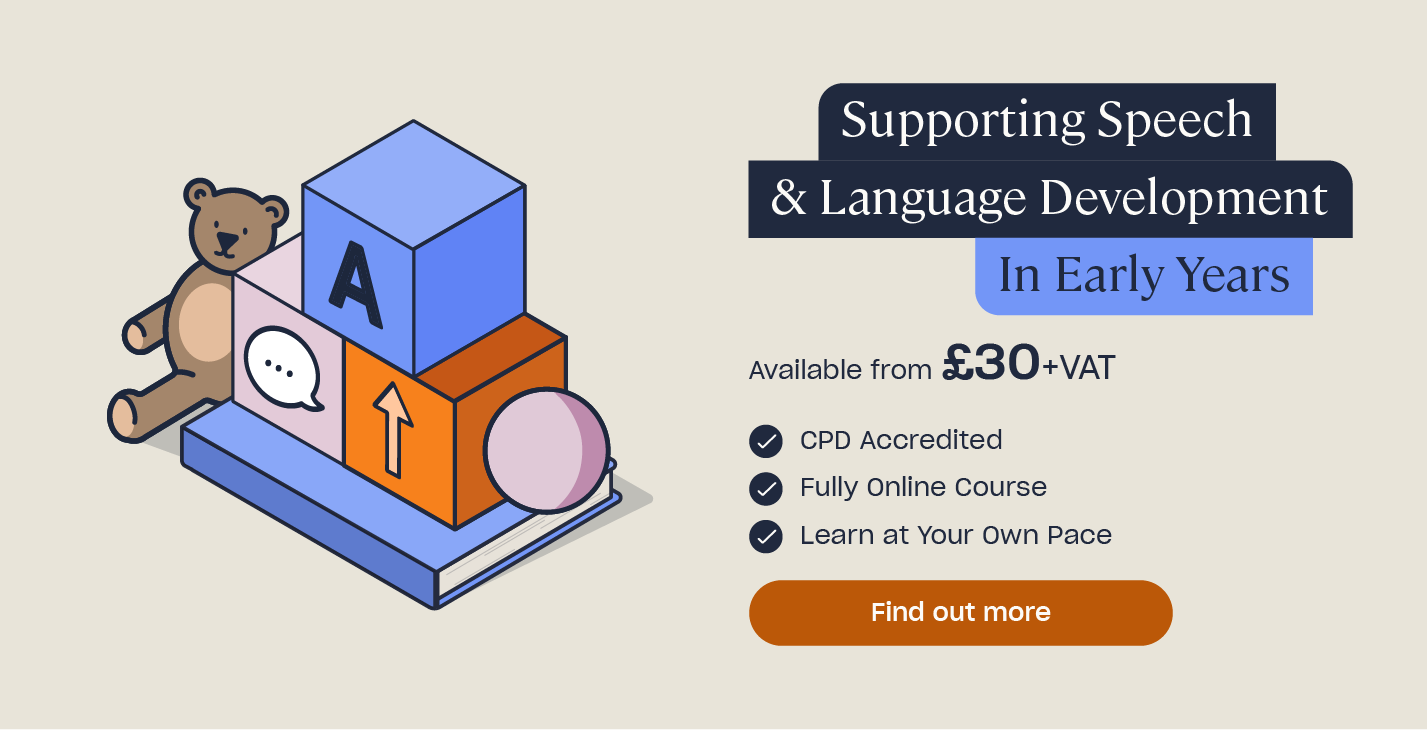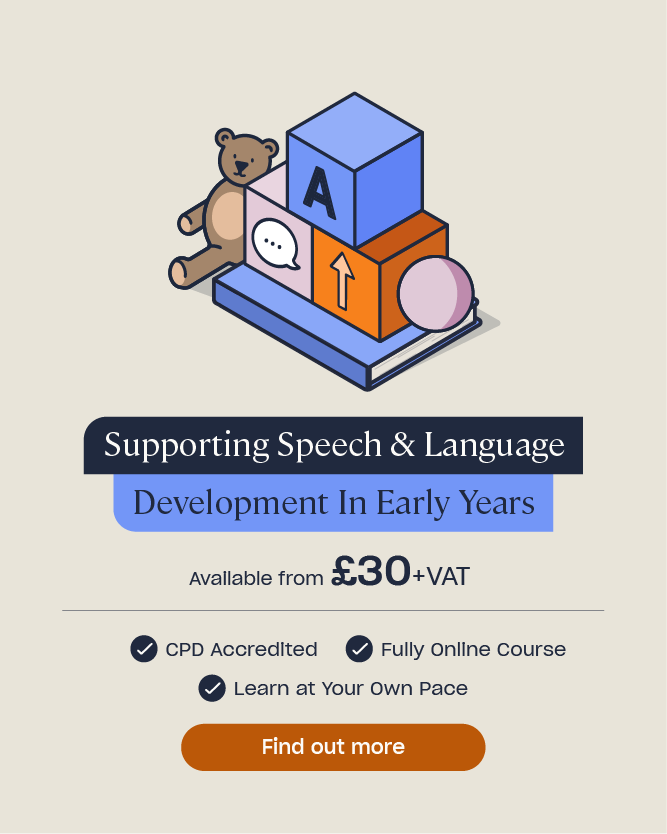How to Support Children With Speech, Language, and Communication Needs
Speech, language, and communication needs (SLCN) are prevalent in classrooms across the country: around 10% of children are estimated to have a long-term issue in this area, with up to 50% having shorter-term difficulties when they start school.
In this article, we will go into detail about what SLCN are, why it’s important to identify these needs in schools and early years settings, and how they can have an impact on learning. We will also provide you with a free SLCN support plan to use in your setting.

What Are Speech, Language, and Communication Needs (SLCN)?
Speech, language, and communication needs (SLCN) are difficulties across one or more aspects of communication and interaction. They range from mild to very severe, and they are a type of special educational need and/or disability (SEND). They can occur in conjunction with other conditions, such as autism spectrum conditions or cerebral palsy, but they can also occur alone. While some SLCN may be present from birth, others may arise during a person’s life: for example, adults might develop SLCN as a result of brain injury or progressive illness.
SLCN are often termed ‘hidden needs’ – many individuals with these needs go unidentified or are given inadequate support, causing their future outcomes to be severely impacted.
Examples of SLCN
There are broadly two types of SLCN: delays and disorders.
A delay is a temporary or short-term form of SLCN, where a child is developing skills in the right order but is behind the average in achieving each milestone. Delays can occur in any area, such as the development of speech sounds, vocabulary, attention and listening, or non-verbal/pragmatic skills (such as taking turns in conversations and following other unwritten social communication rules).
More than half of language delays in children under three are resolved by giving the child support as soon as possible. This then allows them to catch up with their age group. However, if children don’t receive any support, it can lead to more complex, long-term difficulties.

A disorder is likely to require long-term support – we use this term to describe a child who is developing in an unusual or atypical way in one or more areas. For example, a child might have problems understanding language and following what is going on (receptive developmental language disorder), have problems remembering words and forming sentences (expressive developmental language disorder), get stuck on a certain sound or part of a word (stammer), struggle coordinating their muscles to produce sounds (verbal dyspraxia), or have communication anxiety in certain situations that prevents them from speaking (selective mutism).
How Do Speech and Language Disorders Affect Learning?
A child with SLCN might be affected in the following areas:
- Expressing needs, wishes, and ideas. We need speech, language, and communication to tell others what we need, what we want, and what we think about a certain topic.
- Social interaction. To interact with others and make friends, we need to be able to communicate and understand social rules. Those with SLCN are more likely to be isolated or bullied (Knox and Conti-Ramsden, 2003).
- Emotional development. We use language to understand, recognise, label, and explain our own and others’ emotions. Those with better communication skills are more likely to be empathic, have higher self-esteem, and be resilient (Public Health England, 2016).
- Learning. Spoken language is our main method of teaching in the UK. Children with poor language skills find it more difficult to understand new words and concepts, instructions, and feedback, leading to lower academic achievement (Snowling et al., 2011).
- Literacy skills. In the UK, early reading is taught using a phonic approach, which begins with hearing, recognising, and reproducing individual sounds, then learning to segment and blend them in words. These phonic skills form the basis of reading and spelling – with children learning the graphemes (written form of the sound) alongside the phonemes (the sound itself). Poor awareness of speech sounds makes this process more difficult.
- Behaviour. Language helps us learn and follow rules, and exercise self-control (being calm/rational). Those who struggle to understand or express language may become frustrated and display challenging behaviour; one third of youth offenders and 81% of children with emotional or behavioural disorders have SLCN (Early Intervention Foundation, 2017).
- Mental health. Poor communication skills are a mental health risk factor: children with SLCN are five times more likely to develop mental health problems than those without (NHS Digital 2018).
- Future employment. Jobs today often require strong communication and literacy skills. Those lacking these skills have fewer job options and earn on average 11% less. Children with poor language skills at age five are also twice as likely to be unemployed in adulthood (Early Intervention Foundation, 2017).

Why Is It Important to Identify SLCN in Schools and Educational Settings?
By identifying SLCN – the earlier the better – you can provide children with the support they need to achieve their best possible outcomes. This might be in the area of educational outcomes, employability, mental health, or making friends, all of which are vital to a child’s life.
However, as we’ve discussed, it can be difficult to identify and know how to help a child with speech and language problems. These types of needs are considered to be ‘hidden disabilities’. Awareness of the potential warning signs and training in this area can be useful tools to improve the likelihood of early identification and support.
Need SLCN Training?
Our course on Supporting Speech and Language Development in Early Years gives you the information you need to identify and support SLCN, providing you with detailed strategies for each potential need. The course also explains what you can do to support the development of children without SLCN – such as having a communication-friendly setting – and what typical development looks like, including for children with EAL. Find out more about this and our other courses in our course library.
Free SLCN Support Plan
We have created a free downloadable SLCN support plan to help you identify what a child may be struggling with and come up with ways you could help. It also prompts you to think about the outcomes you’re seeking from the child, and has space to review the effectiveness of the plan, as well as coming up with adaptations to improve it.
Any education professional can use the plan, and it can be used for children with or without a diagnosed need. The plan should be agreed by the child’s parents or carers, key person, and your SENCo or SEN Lead (if applicable).
You can download the SLCN support plan here:
Speech, language, and communication needs are prevalent across the country, and can have a huge impact on a child’s life and future outcomes. It’s important for those who work with children to understand how to identify SLCN and put support strategies in place, using tools such as our free downloadable SLCN support plan.
Further Resources:
- Supporting Speech and Language Development in the Early Years
- Why is Child Development So Important in Early Years?
- Supporting Pupils With SEN in the Classroom: Guidance for Teachers
- How to Help a Child with Dyslexia in the Classroom
- Recognising the Signs of Dyslexia in Children
- What is the Graduated Approach?
- How to Support a Child with Autism in the Classroom
- Epilepsy Awareness Training











